Aquatic plants: Six perfect choices for those wishing to dip their toes into the world of watery flora
Growing aquatic plants in your Robert Woods, editor of Fish Keeping World, explains more.
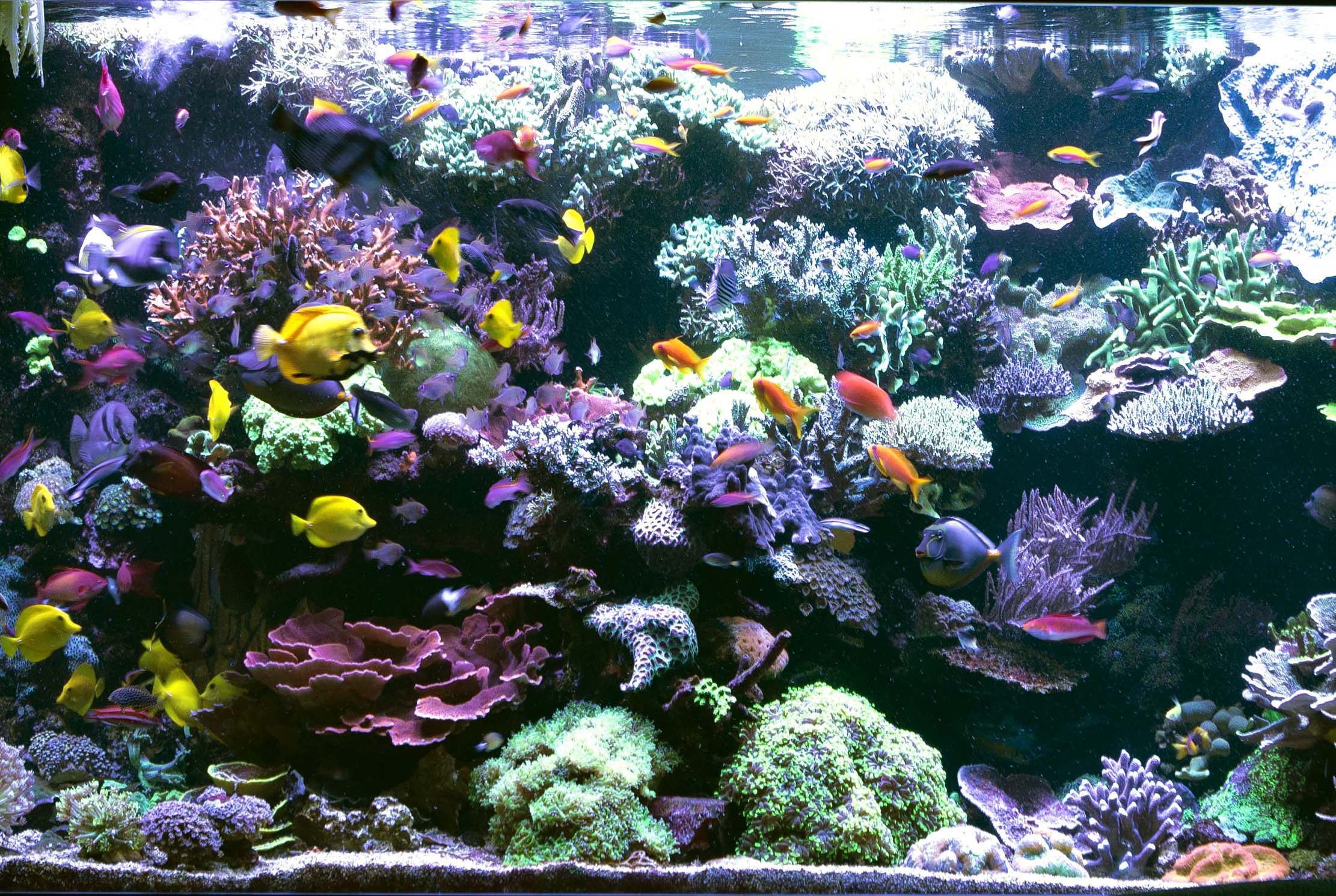
Just like gardening can bring extensive mental health benefits, so can gardening underwater! If you’ve ever been into a public aquarium, you’ll know the calming effects that fish can have on you so you might want to consider having your own aquarium at home. There are so many options when it comes to decorating your aquarium, and one of the most favourite and relaxing, is creating an underwater aquascape with plants, rocks and driftwood.
There are so many different setups to choose from, you might want to create a half land, half aquatic tank which is known as a paludarium, or maybe you want to create a beautiful aquascape that looks like an underwater forest. Aquascaping is both an art and hobby all in one, and can bring great pleasure and rewards to the artist, especially when you add fish which help to bring the piece of art you’ve created to life.
As a beginner to aquariums and aquascaping, you’ll most likely want to choose plants which are easy to care for, that don’t require much maintenance, and can withstand a few mistakes when it comes to the water conditions. This article will feature six plants that will help you to dip your toes into the wonderful world of aquascaping.
Java Moss
Java Moss is an excellent first beginner’s plant and you only need a small amount of this plant to bring a tank to life. It has bright green leaves and no real roots; instead it absorbs most of its nutrients through its stem and leaves. This hardy plant will grow in most water types in both cold water and tropical tank setups, and high and low light conditions.
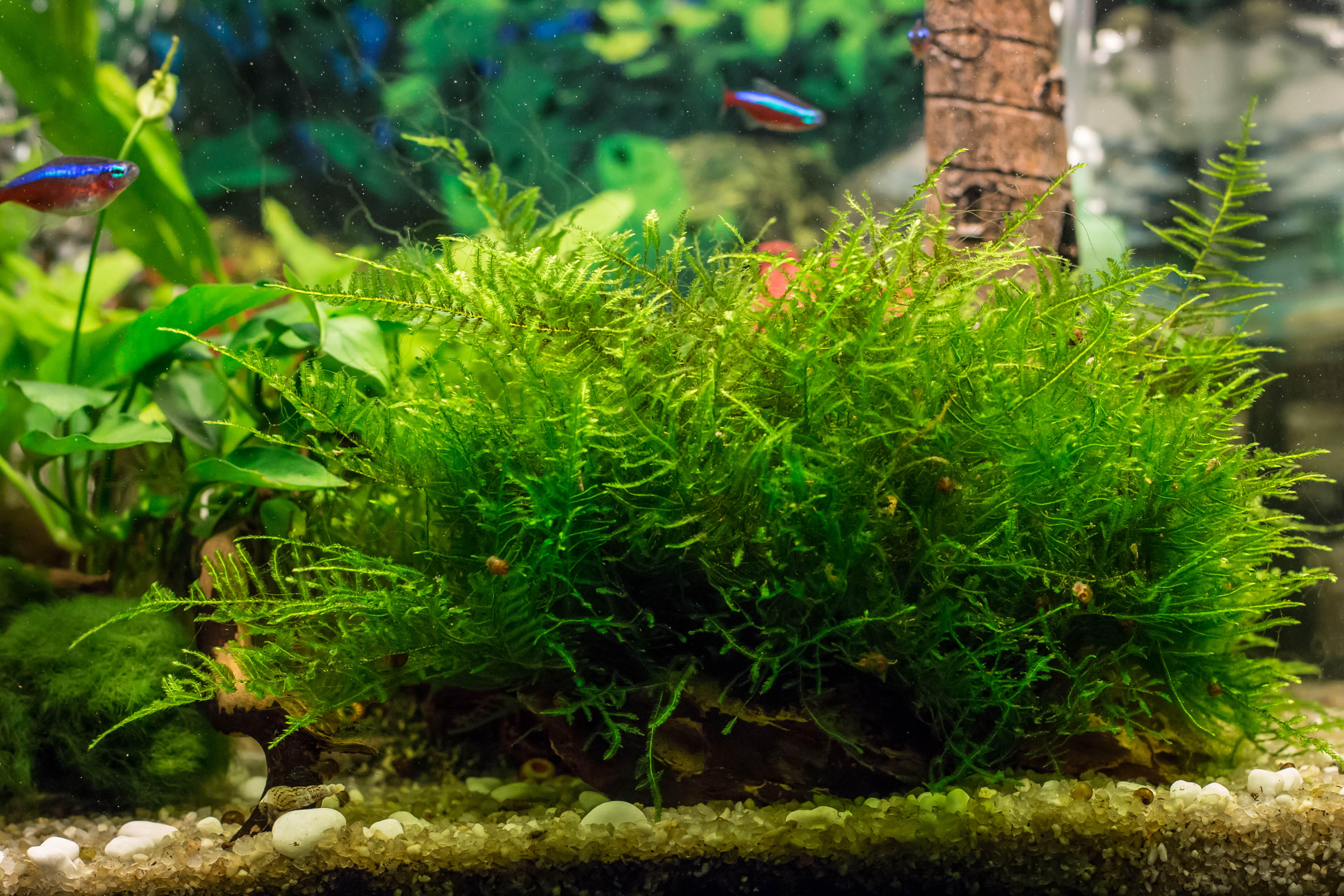
It has many purposes and can be used in a few different ways. It can be used to cover the bottom of the tank with a carpet; this creates a bright green bushy effect. Carpet plants are useful for small fish to hide in, or even shrimps if you fancy adding a different element to the tank. Alternatively, you can use Java Moss to create tree like shapes, by gluing the plant to the top of a piece of driftwood.
Anacharis
Another great option for beginners is Anacharis which is also known as Egeria, Elodea or Waterweed. Anacharis has dark green leaves which produce a really lush feel to your tank. It can adapt to wide range of water conditions and might need trimming regularly as it grows quite quickly. If you trim it, you’ll have a nice neat uniform look, whereas if you leave it to grow you’ll achieve a densely packed forest look.
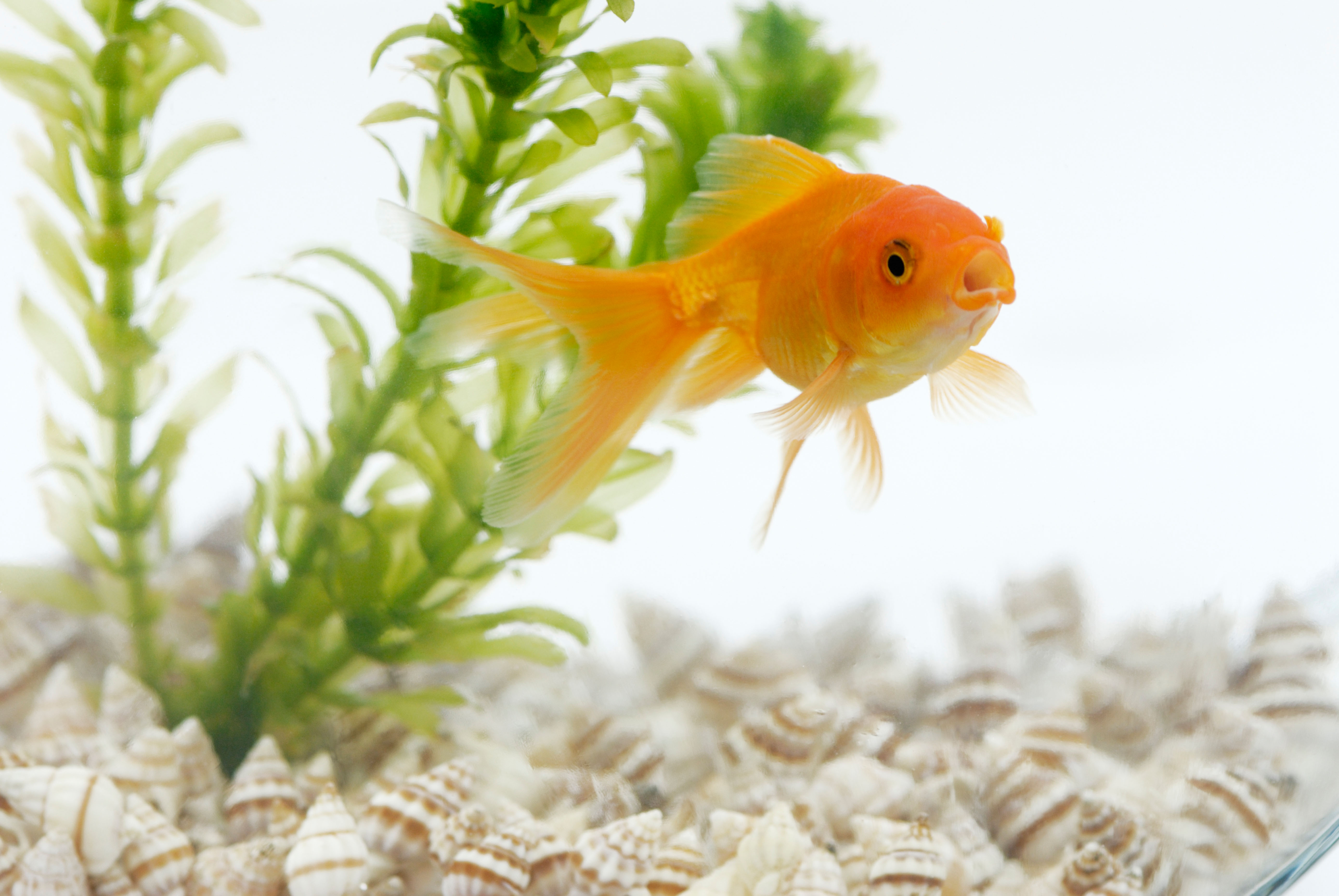
Anacharis is usually used as a background plant to create a nice bushy effect along the back wall of the tank. They need to be planted around an inch apart to ensure each plant has enough space to grow. Alternatively this plant can be left to float on the top of the plant providing another interesting dynamic.
Exquisite houses, the beauty of Nature, and how to get the most from your life, straight to your inbox.
Water Wisteria
Water Wisteria is bright green in color and can provide a few different looks. It can either by planted in the substrate or grown as a carpet across the bottom of the tank. Carpets will form a thick layer across the bottom whereas planting them individually will add detail and shape to the middle levels of the tank.
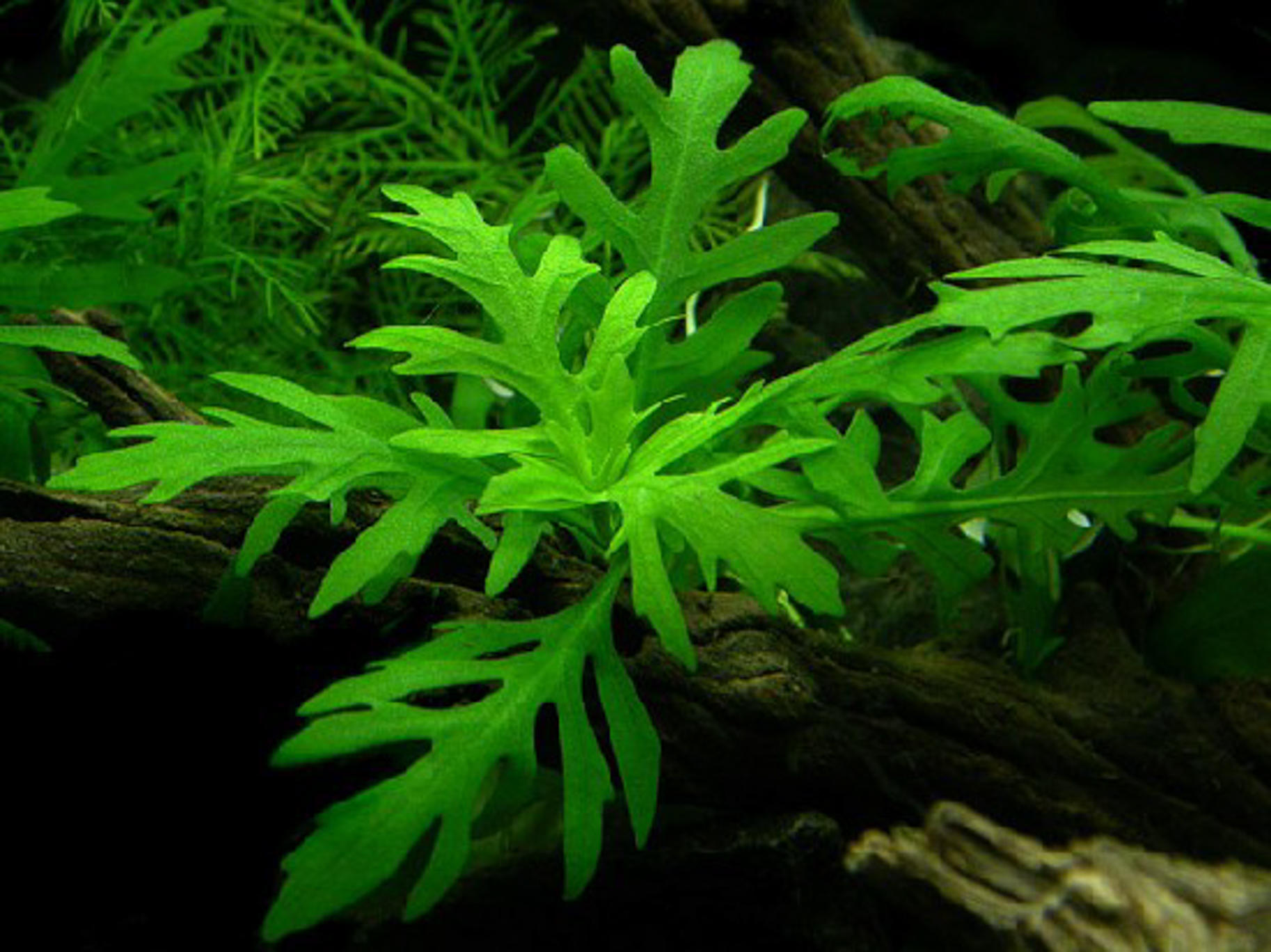
This undemanding and hardy plant only needs a small amount of maintenance and won’t take up much of your time. These stems can reach up to 20 inches tall and 10 inches wide so they will need trimming regularly; other than that they will pretty much look after themselves as long as the water conditions are right.
Amazon Sword
The Amazon Sword is one of the most popular centerpiece aquarium plants available. With bladelike leaves that create a forest type effect, this plant has earned itself a great reputation for almost any setup. This bushy plant’s leaves can grow up to 14 inches in length.
It should be planted in the mid-section of the tank to give it plenty of space to stretch out and grow. It doesn’t need much maintenance and as long as it has enough space to grow, you probably won’t need to trim it. It doesn’t need any specific nutrients and should flourish under the right water conditions.
Java Fern
Java Fern is another popular beginner plant. This delicate looking fern is slow growing, making it one of the easiest to care for. It has a unique shape and it’s almost impossible to kill – great for those just starting out. With leathery textured leaves, this plant is available in a variety of greens, from medium to dark green depending on the intensity of the lighting.
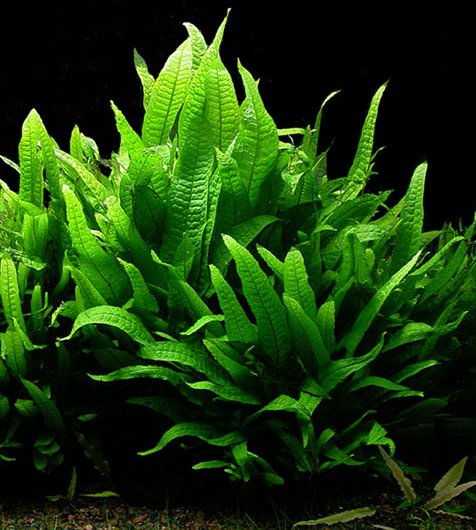
This plant doesn’t like to have its roots buried, in fact it probably won’t grow at all if they are buried. It has fine rhizomes which need to be attached to driftwood or rocks. Initially you’ll need to use fine cotton or fishing wire to attach the plant, but after a few weeks it will anchor itself onto whatever surface you’ve attached it to. This can create another unique element to a tank.
Hornwort
Hornwort is a fast growing plant which can reach heights of 10 feet! This plant looks ethereal as it sways along the back wall of a fish tank. It also has allelopathic abilities and can prevent the growth of blue-green algae in an aquarium.
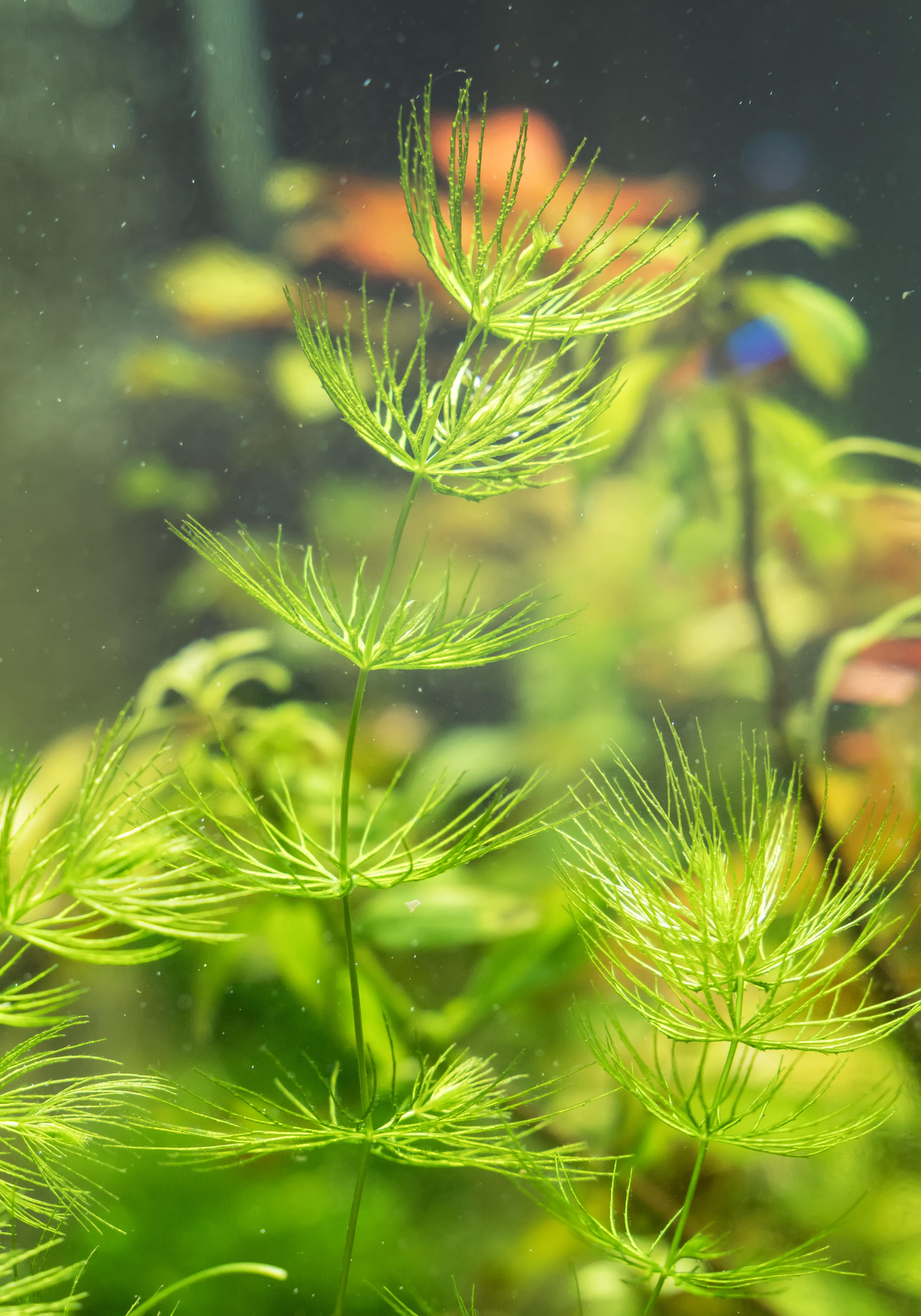
Each plant has multiple stems which makes it look like more than one plant. It can either be planted or floated depending on the look you want to achieve in the tank. This plant will need regular trimming but other than that it has very few other demands.
Ready To Dip Your Toes In?
If you love gardening, aquatic plants can be just as fun but usually require less maintenance. These six plants are all easy to plant and care for.
If you’re new to fishkeeping, there are a whole range of small and large fish which you could keep with these plants. An ideal tank size to begin with would be a 20 gallon tank. This gives you enough space to try a couple of different plant and fish species.
Robert Woods is an avid fish keeper and creator of Fish Keeping World, where he shares his years of aquatic experience with people all over the world. He particularly enjoys finding new plant species and learning how to care for them.
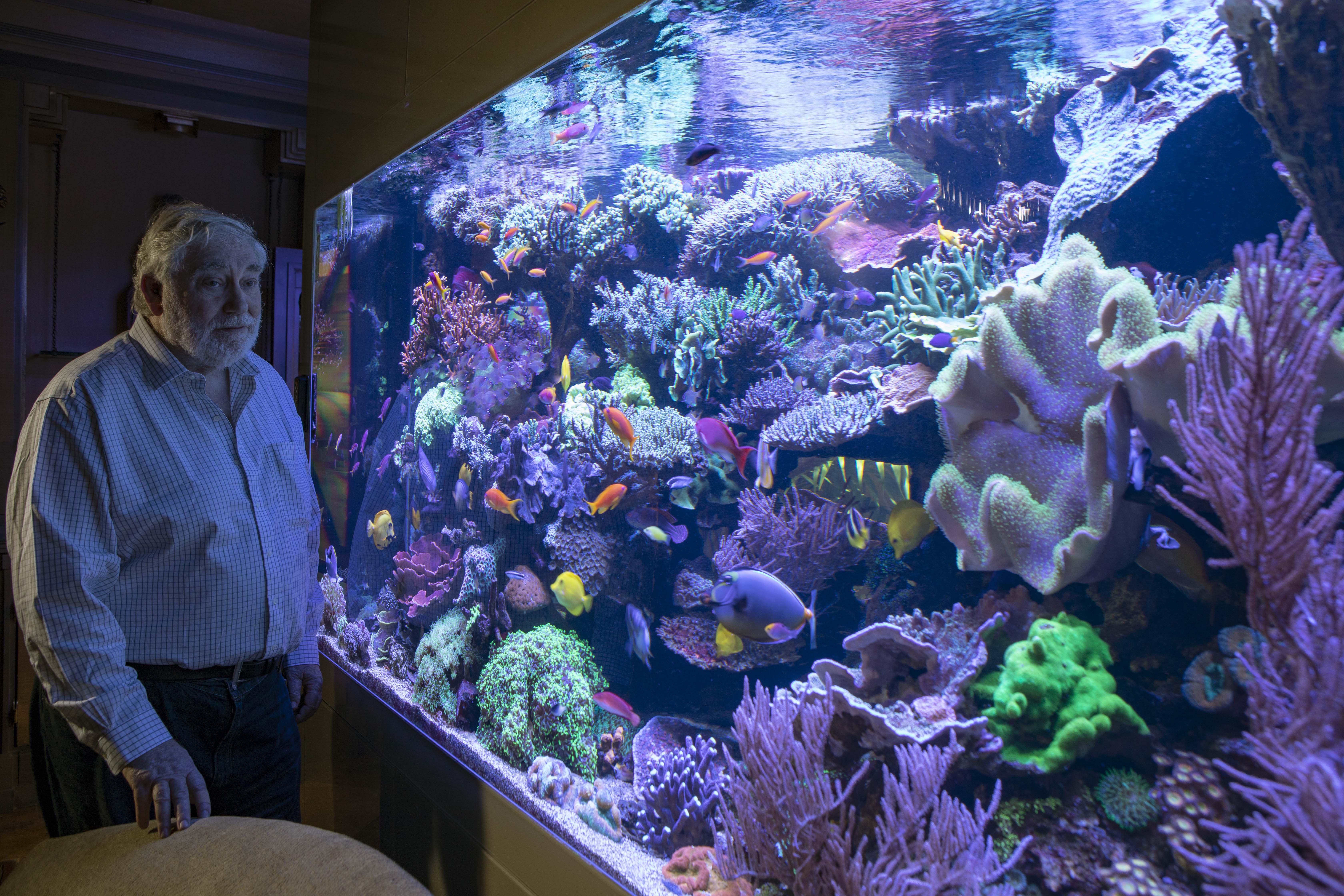
Keeping fish: Building a world-class aquarium, choosing what to put in it — and getting them to swim into your arms
Keeping fish at your home can bring a great sense of serenity — but did you know that fish can